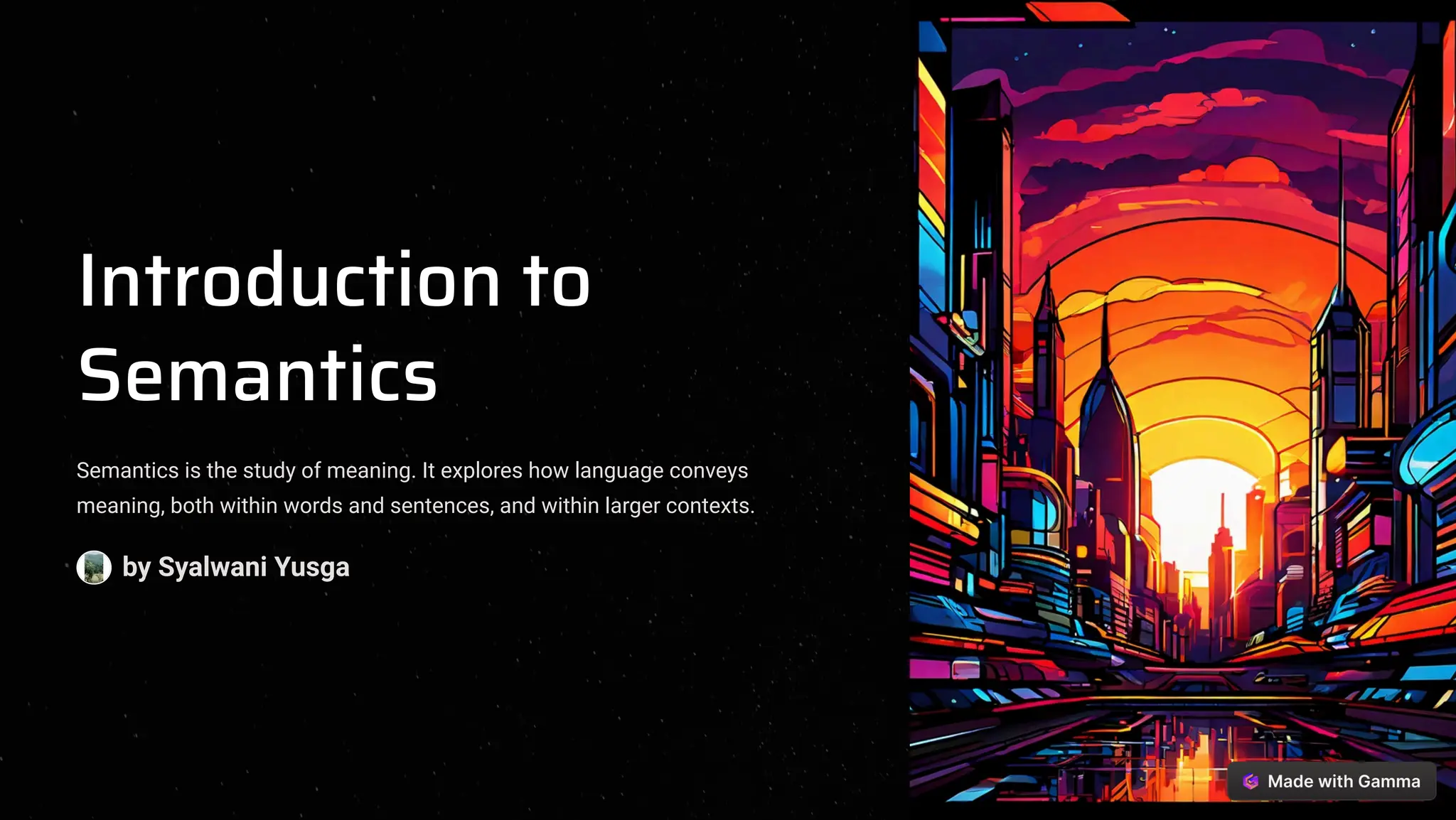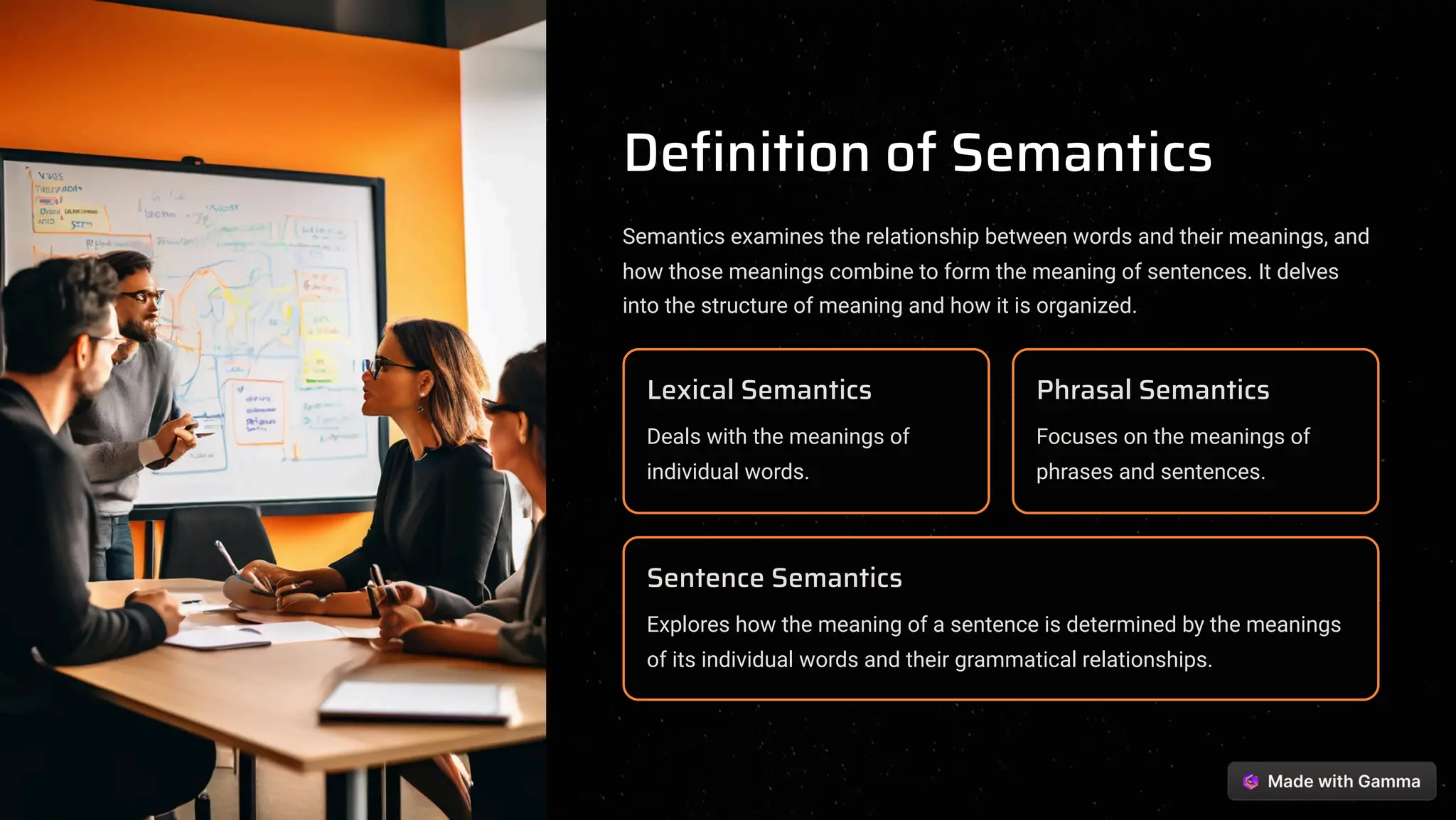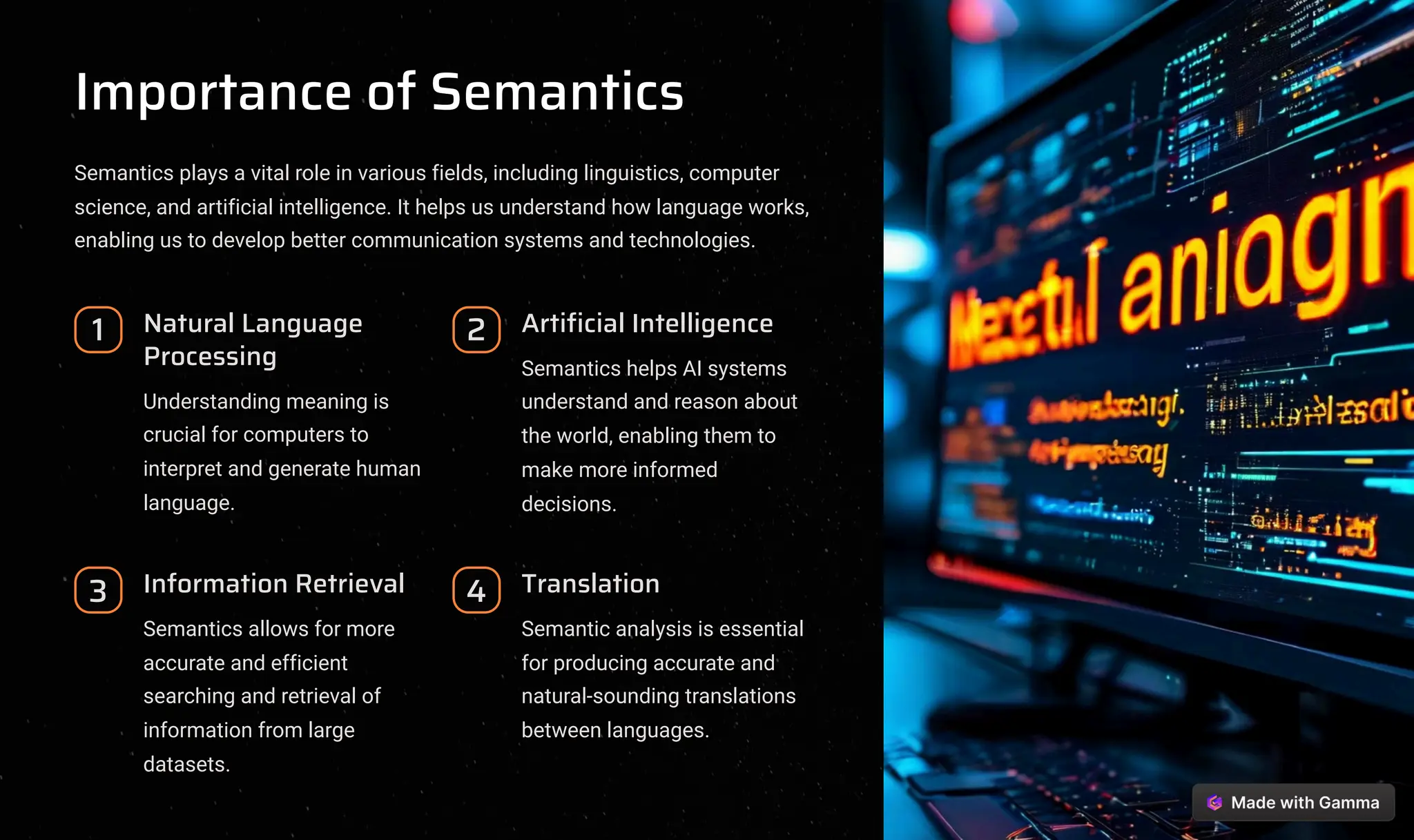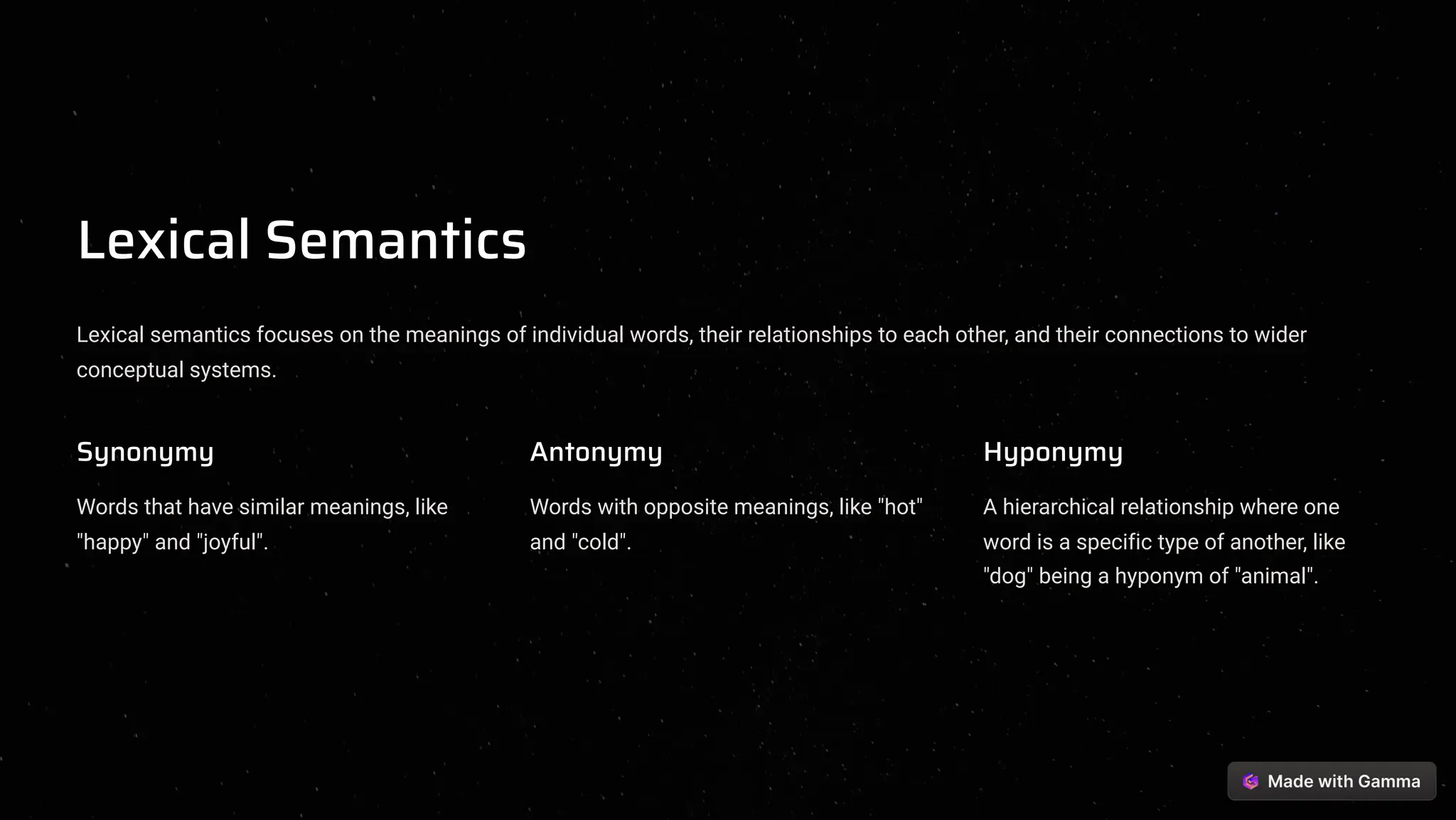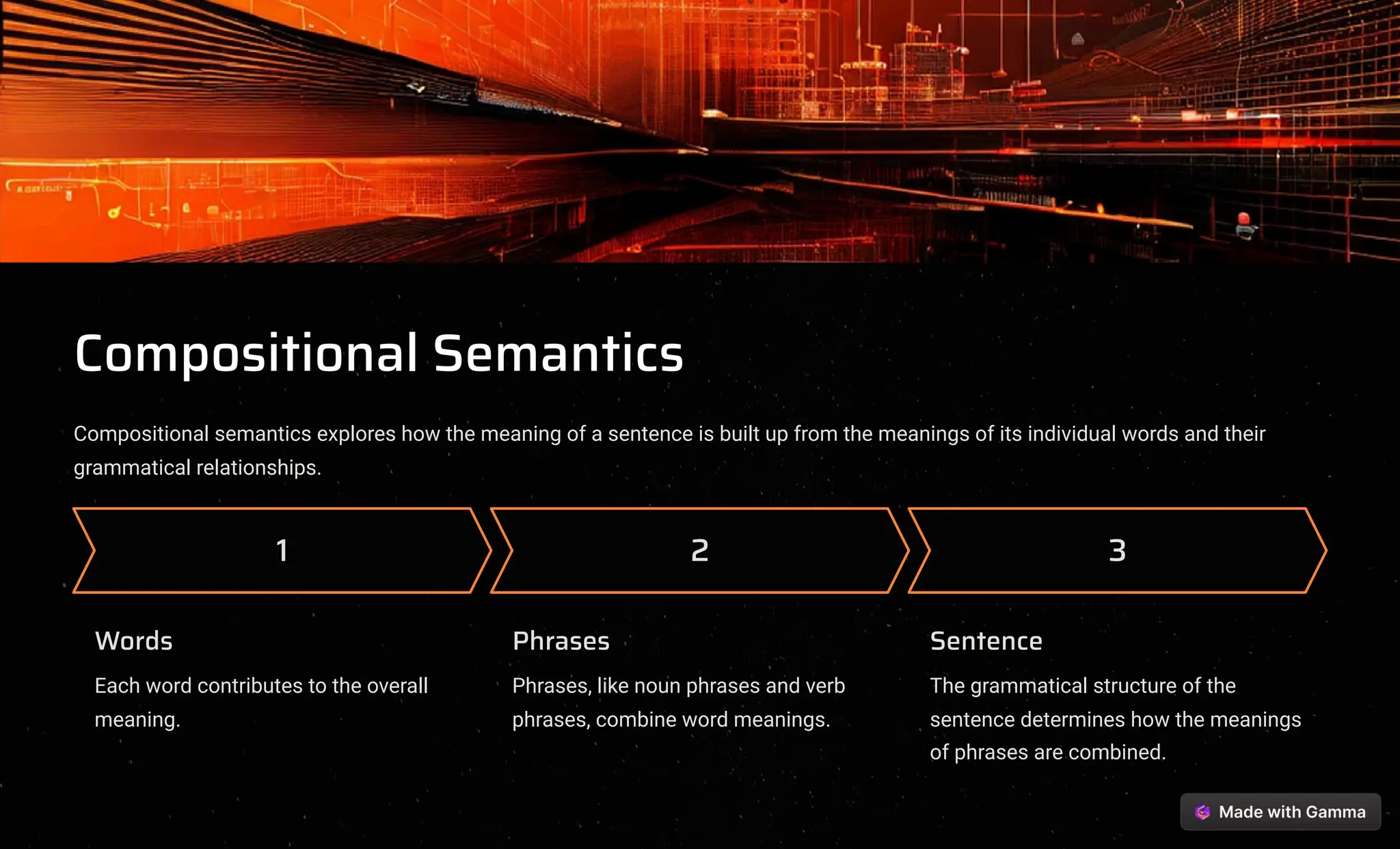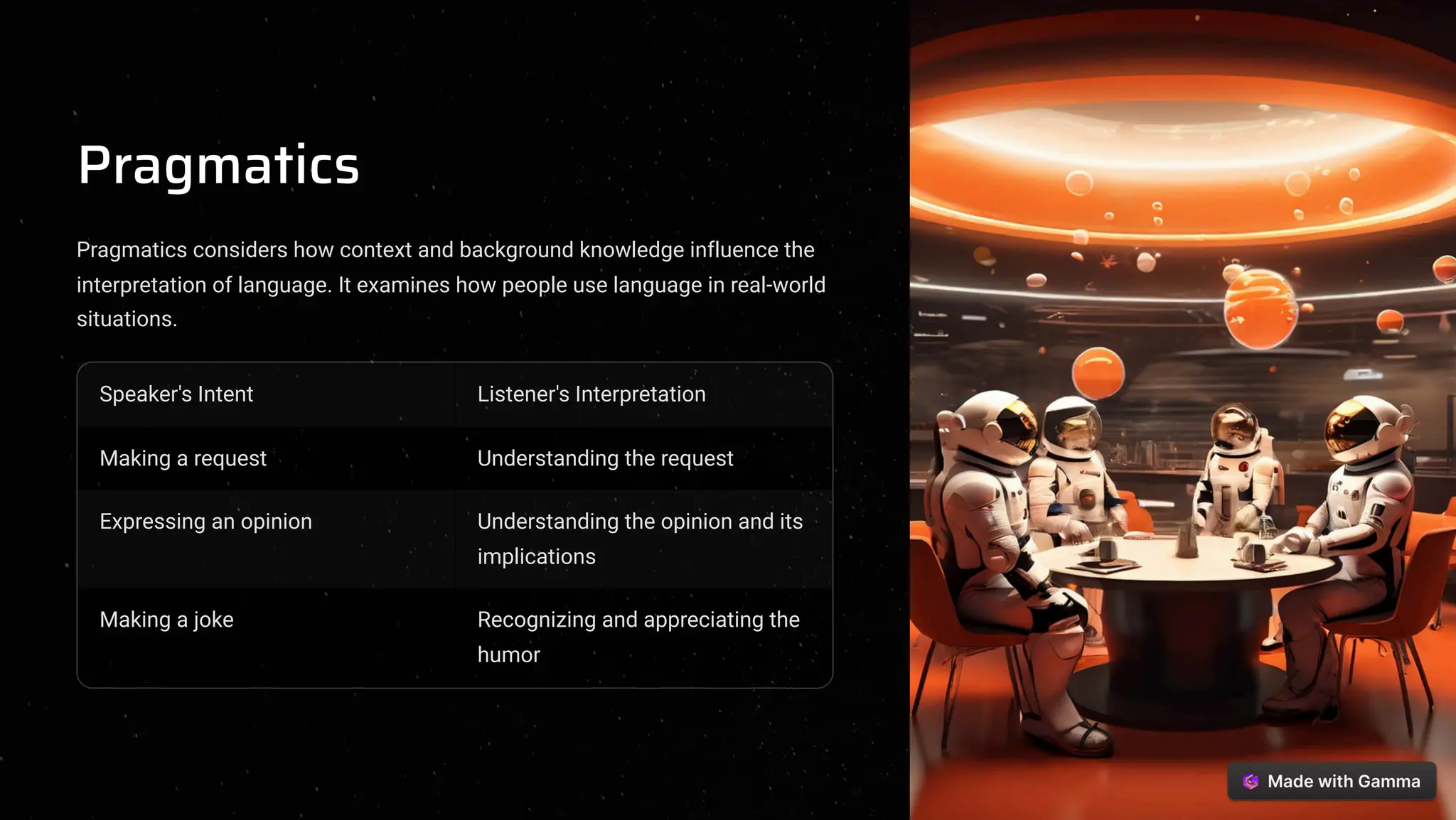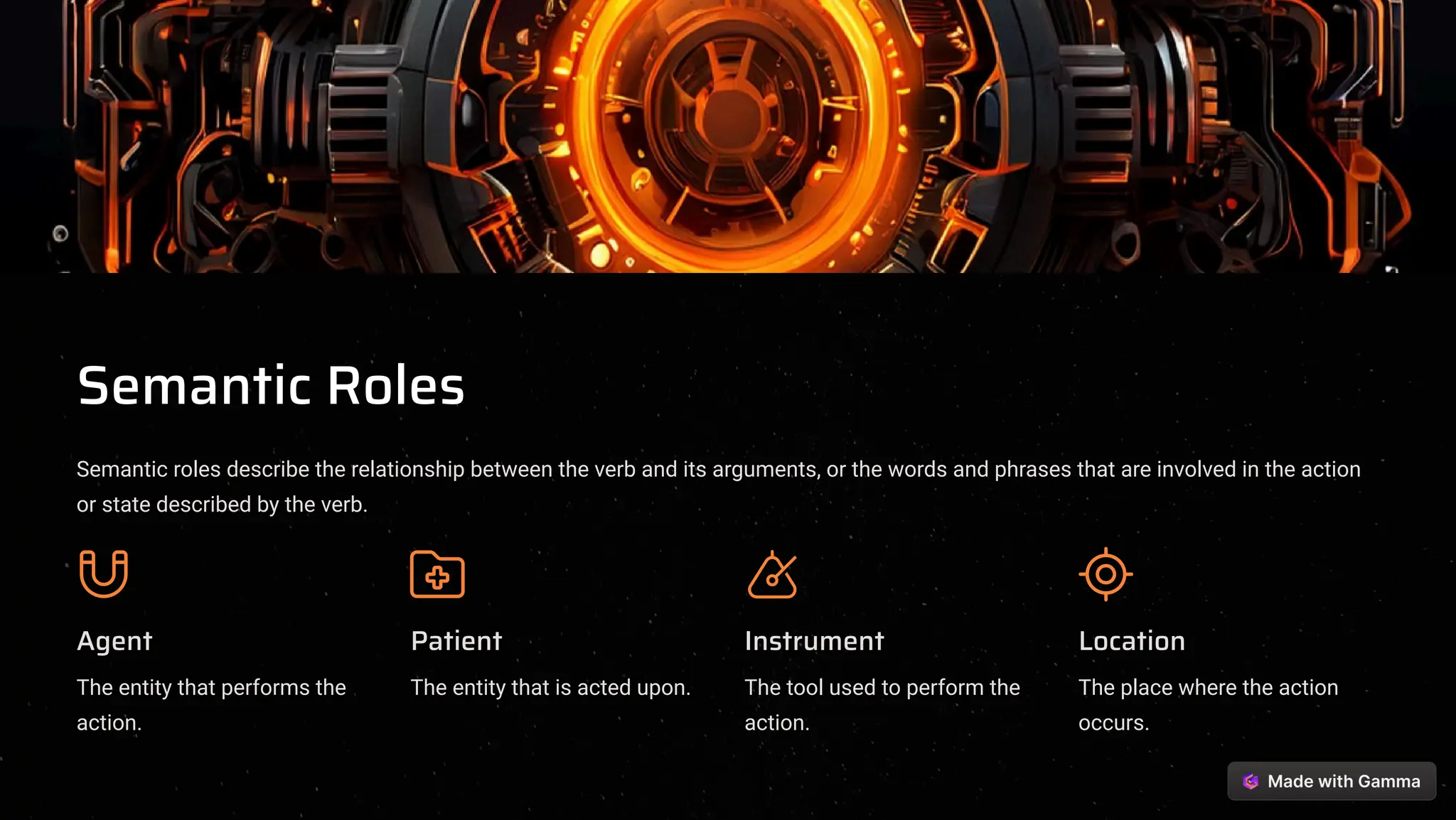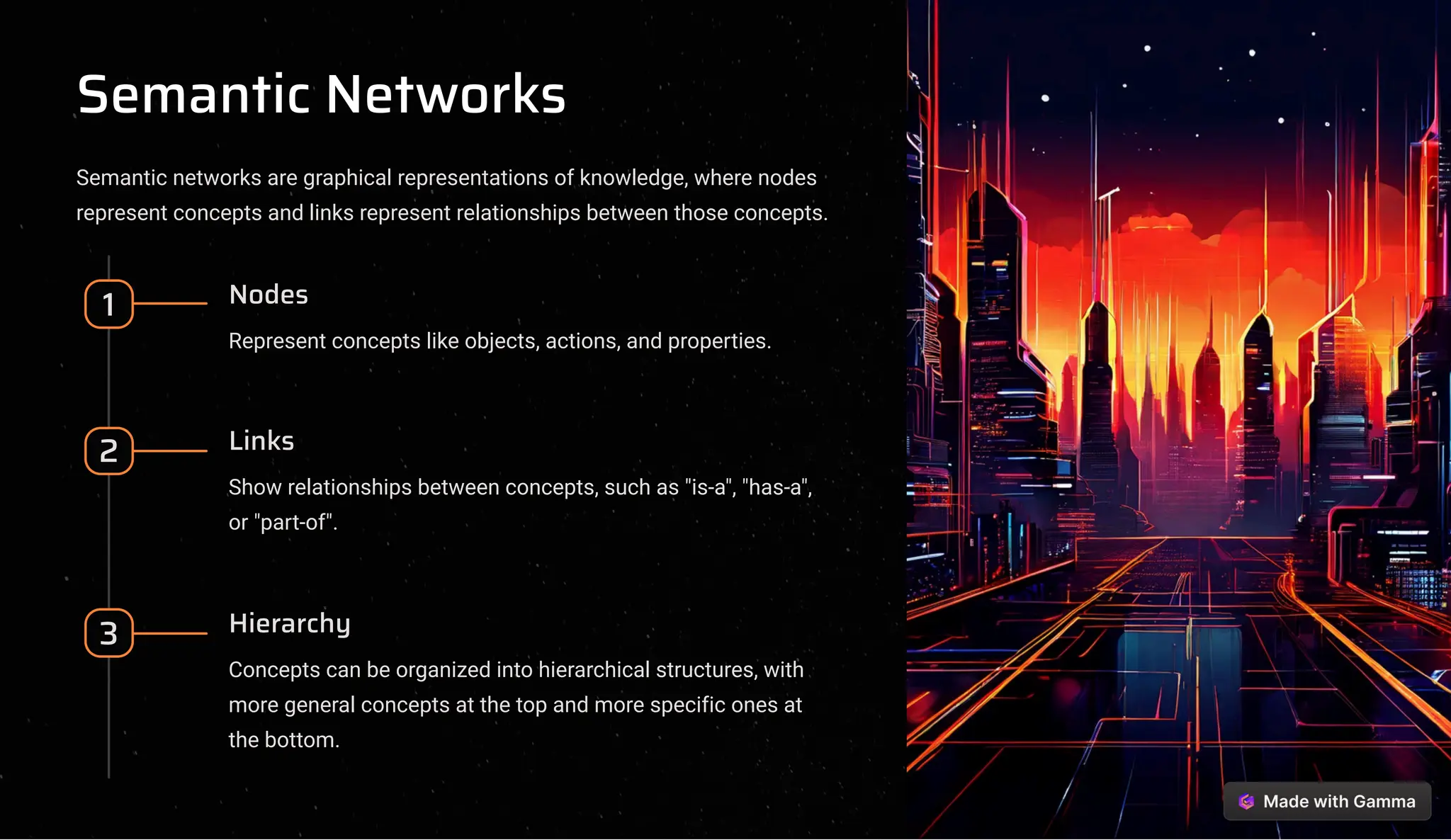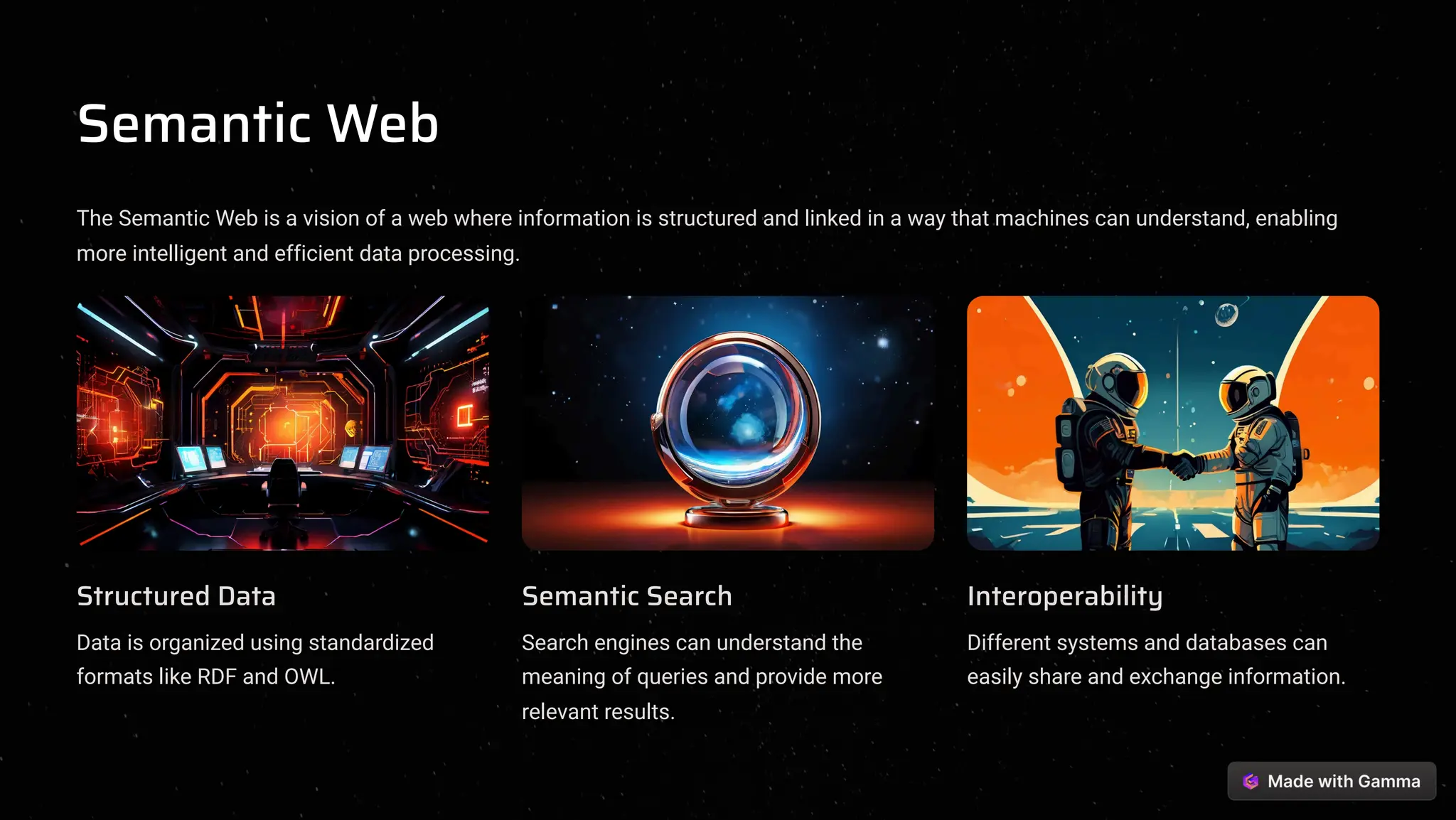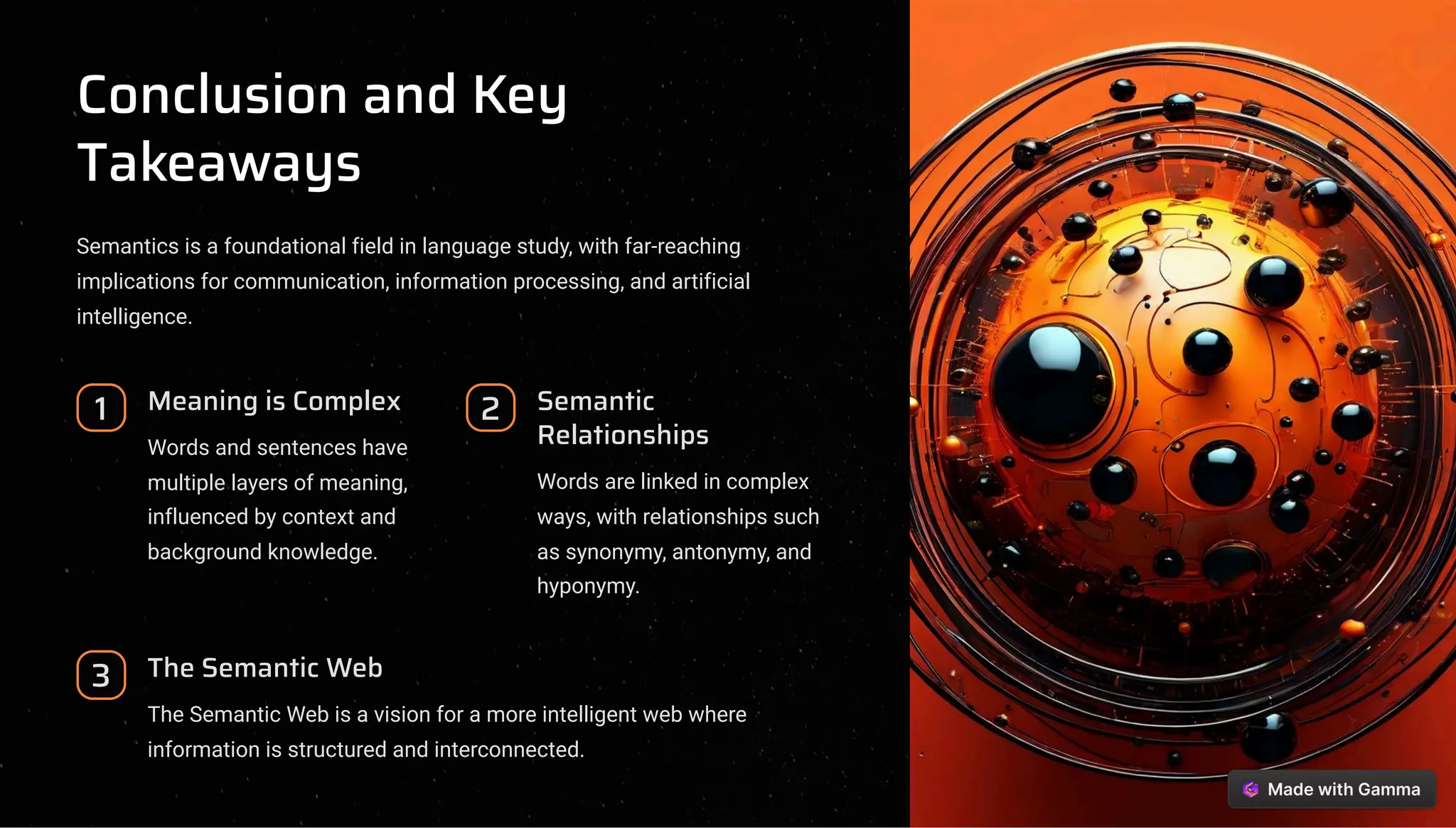Semantics is the study of meaning in language, exploring how words and sentences convey meaning and how they are structured. It has critical applications in fields like natural language processing, artificial intelligence, and information retrieval. The document also discusses various aspects of semantics, including lexical and compositional semantics, pragmatics, and the concept of the semantic web.
